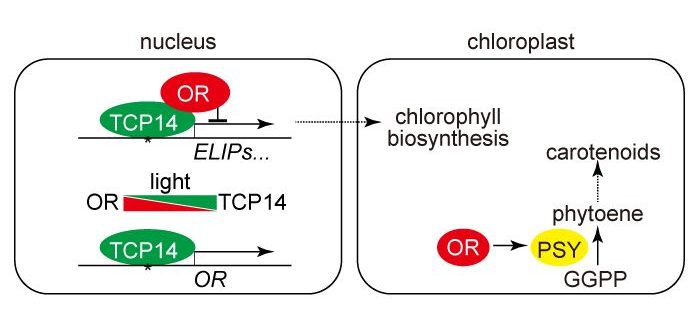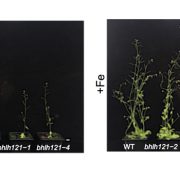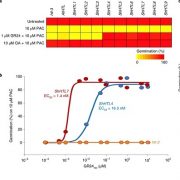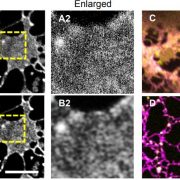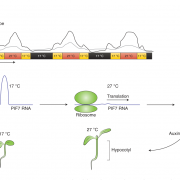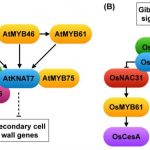Arabidopsis OR Represses the Greening of Cotyledons while It Is in the Nucleus
Sun et al. showed that OR interacts with TCP14 in the nucleus of dark-germinated seedlings and reduces chlorophyll biosynthesis, thylakoid membrane development and expression of EARLY LIGHT-INDUCIBLE PROTEINS, and that subsequent illumination relieves this repression. Plant Cell https://doi.org/10.1105/tpc. 18.00290
By Tianhu Sun and Shan Lu, Nanjing University, China
Background: Cotyledon greening is a crucial transition for higher plants so that they can acclimate to the sunlight after emerging from the soil. Plants precisely coordinate the biosynthesis of both chlorophylls and chlorophyll-binding proteins to avoid photodamage caused by free chlorophyll molecules. The ORANGE (OR) protein was originally identified as a plastid protein that promoting carotenoid biosynthesis and accumulation at the post-translational level. However, OR was also found to localize in the nucleus in etiolated cotyledons, and overexpression of OR delayed the greening process when dark-germinated seedlings were exposed to the light.
Questions Is it a new function of OR to repress the greening process of cotyledons while it is in the nucleus? Would such repression help developing cotyledons avoid photodamage?
Findings: We found that, in dark-germinated seedlings, nuclear-localized OR interacts with the bHLH transcription factor TCP14 and represses its transactivation activity. TCP14 directly binds to the promoter regions of genes for the chlorophyll-binding EARLY LIGHT-INDUCIBLE PROTEINS (ELIPs) and activates their expression. Therefore, OR represses expression of ELIPs through its interaction with TCP14. Under illumination, the predominant localization of OR is switched from the nucleus to chloroplasts. This derepresses TCP14 and enables the accumulation of ELIPs. The homeostasis of the OR-TCP14 interaction functions as a checkpoint to regulate chlorophyll biosynthesis and chloroplast biogenesis in cotyledons.
Next steps: An interesting question to be addressed is how a plant switches the localization of OR from the nucleus to chloroplasts during the greening process. While in chloroplasts, the function of OR in promoting carotenoid biosynthesis might also favor the acclimation of newly developed seedlings to the light.
Tianhu Sun, Fei Zhou, Xing-Qi Huang, Wei-Cai Chen, Meng-Juan Kong, Chang-Fang Zhou, Zhong Zhuang, Li Li, and Shan Lu. (2019). ORANGE Represses Chloroplast Biogenesis in Etiolated Arabidopsis Cotyledons via Interaction with TCP14. Plant Cell. https://doi.org/10.1105/tpc.18.00290.
Key words: chlorophyll, chloroplast, cotyledon, ORANGE, TCP14.


